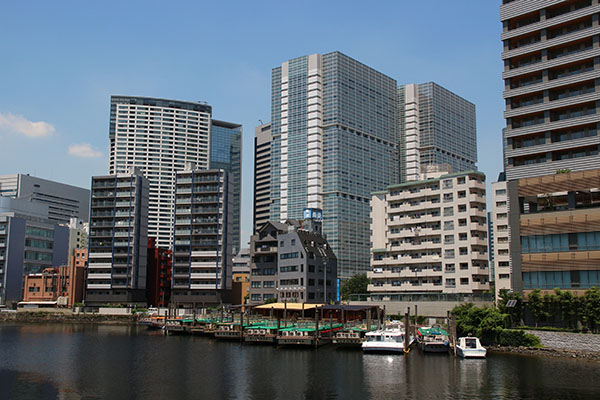Discovering the Attractive Qualities of Shinagawa!
One Hundred Scenes of Shinagawa—Shinagawa area
The “One Hundred Scenes of Shinagawa” depict the everyday life, history and climate of our town, and they are suggested and determined by the votes of Shinagawa City residents. In this series, we introduce the “One Hundred Scenes of Shinagawa” that show aspects and events of Shinagawa.
Shinagawa-ura Waters and Boat Clusters
(1 Kita-shinagawa and 1 Higashi-shinagawa)
The waters of Shinagawa-ura once boasted a rich fishery industry, and the area was one of the main producers of seaweed. Rows of fishing boats and yakata-bune leisure barges still line the waterfront, forming an interesting contrast with the ranks of business buildings in the background.
From Chinju Bridge—Ebara Shrine Surrounded by Young Greenery
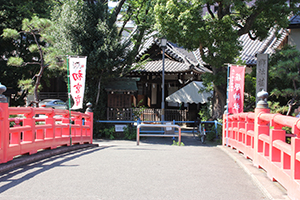 |
(2-30 Kita-shinagawa)
Ebara Shrine is beloved by city residents as the guardian shrine of the Minami-shinagawa area. Until the early Showa Period and before the river-improvement project began, the Meguro River flowed on the north side of the shrine. You can see Ebara Shrine nestled in a green grove from Chinju Bridge that stretches over the Meguro River. |
Rows of Sophora Trees along Zemusu Slope Street
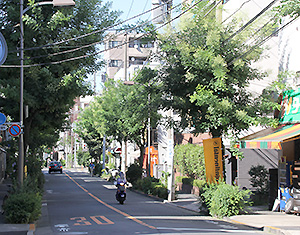 |
(5 and 6 Minami-shinagawa)
During the Meiji Period (1868–1912), a British man named James Gordon invested his personal fortune to improve road in Minami-shinagawa to make a gentle slope, which is how this street got its name (James = Zemusu). Here sophora are planted on both sides of the street, and their flowers bloom around July, forming white rows. |
Shinagawa Shrine Reitai-sai Festival (June)
(3-7 Kita-shinagawa)
The Shinagawa Shrine Reitai-sai Festival, held every year in early June, is known as the Kita-no Tenno-sai Festival. The sight of the massive portable shrine called “Senkan Mikoshi” carried by residents making its way through various neighborhoods in tempo with the unique Shinagawa byoshi beat is magnificent. |
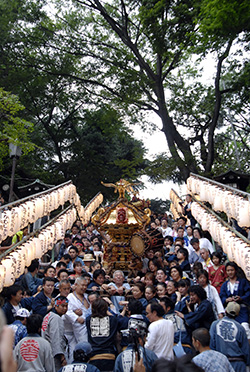 |
Kodomonomori Park (Children’s Woods Park)
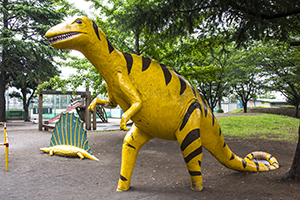 |
(3-10 Kita-shinagawa)
This park fulfilled children’s requests, and much of its popularity comes because of its playground equipment, in the forms of nine large and small dinosaurs. The park’s nickname is “Kaiju Koen” (Monster Park). |
Red Brick Former Transformer Substation
(1-6 Hiromachi)
There is an impressive red brick building in one corner of the JR East Tokyo General Rolling Stock Center beside the Keihin-Tohoku Line railway. It was reportedly constructed during the Taisho Period (1912-1926). |
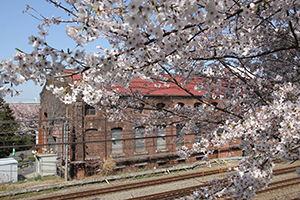 |
Shinagawa Shukuba Matsuri (September)
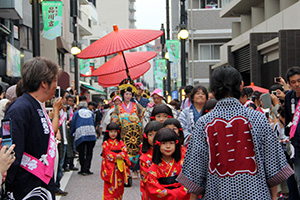 |
(Kita-shinagawa to Minami-shinagawa)
This festival has continued since 1990 in the Shinagawa-shuku area, which prospered as the first shukuba (post station) along the Tokaido Road. The procession of oiran (courtesans) and Edo Period costume parade in which participants are dressed in luxurious kimonos fill the atmosphere with a sense of old Edo. |
Hara Museum of Contemporary Art
(4-7-25 Kita-shinagawa)
The Hara Museum occupies the refurbished former Hara residence, which was originally built in 1938, and opened in 1979 as a museum specializing in contemporary art. Modern art from across Japan and around the world is introduced here through various events. |
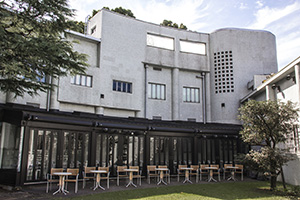 |
|


